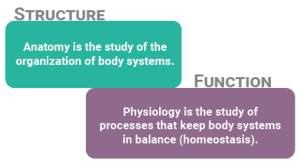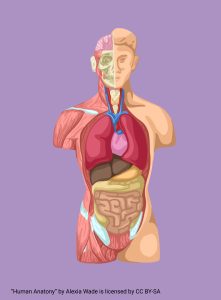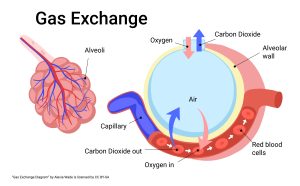Anatomy and Physiology Defined
Rachel Jessop and Jim Hutchins
Objective
1. Understand the difference between anatomy and physiology.
2. Become familiar with standard medical terminology, if you are not already.
Anatomy & Physiology
Anatomy (Greek: anatomē, “dissection”) is the study of the structure of the human body.

Physiology (Greek: physis, “nature, origin”, and –logia, “study of”) is the study of the function of the human body. The most important branch of physiology is the study of homeostasis, which is the condition of equilibrium (balance) in the body’s internal environment due to the constant interaction of the body’s many regulatory processes. We will examine homeostasis in a later objective.

The primary reason we teach anatomy and physiology together, in a single two-semester course, is that anatomy (structure) and physiology (function) are so intimately interrelated. But which leads to the other? Does structure determine function? Or does function determine structure?
Short answer: Yes.
Longer answer: Each influences the other. Structure determines function, as in how bone structure allows the skeletal and muscular systems to perform the functions of support and movement. Likewise, function determines structure, as in how the functional need for cells to pass signals to each other determines there are structures to do just that.

The structure and function of lung alveoli can help with this concept. When we breath in air, it eventually ends up in the alveoli of the lung. The alveolar walls are structurally very thin, being composed of only one cell layer. The thin structure is important because we want to exchange oxygen, among other gases, across that wall to and from the capillary so we can deliver that oxygen to the vital organs of the body. If this wall was very thick, it would be difficult for alveoli to perform their function. For the lungs, as in other human organs, structure and function are inter-related and cannot be separated.
Learning Medical Terminology
If you are unfamiliar with anatomical terms, one resource available for your use is our Medical English text.
It is a free publication that will familiarize you with the terminology we will use often.

